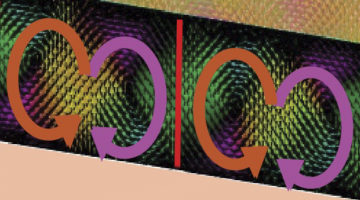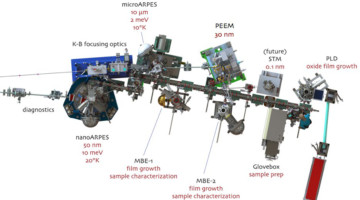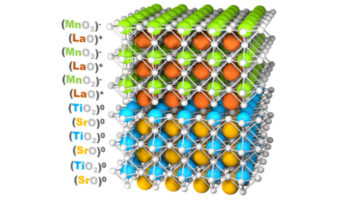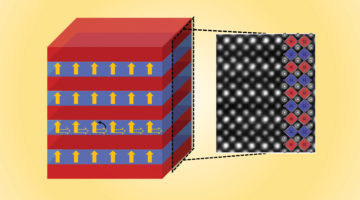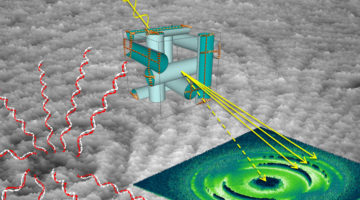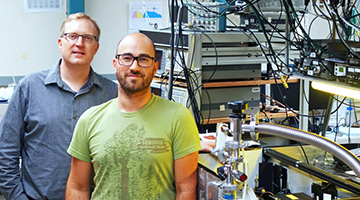Researchers discovered an innovative way to independently control two optical responses in a single-material system by utilizing the material’s phase diagram. This unique combination of material, methods, and results could lead to a paradigm shift in the design of metamaterial devices that manipulate light. Read more »![]()
![]()
X-Ray Handedness Reveals Handedness of Electronic Vortices
Electronic vortex structures have been found to emerge from engineered samples of alternating complex-oxide layers. Resonant soft x-ray diffraction (RSXD) studies using circularly polarized x-rays revealed the vortices’ left- and right-handedness. The intriguing results open the door to electrically controllable chiral devices. Read more »
TE Connectivity Uses ALS to Improve Conductive Plastics
TE Connectivity used ALS microtomography capabilities to optimize the material and manufacturing parameters of their conductive plastics to impart good electrical conductivity. Conductive plastics with good electrical properties offer processing and cost benefits over metal alternatives, with applications ranging from automotive to data communications. Read more »
Tuning the Electronic Structure of a 2D Material
The electronic structure of a stacked 2D material was tuned by in situ electron doping, resulting in a large increase in the splitting of two valence bands. Stacked 2D materials possess an array of tunable properties that are expected to be important for future applications in electronics and optics. Read more »![]()
![]()
The Microstructure of a Parrotfish Tooth Contributes to Its Toughness
Parrotfish chew on coral, producing hundreds of pounds of sand each year. Mapping the microstructure of parrotfish teeth, scientists found bundles of crystals interwoven like chain mail. The results provide a blueprint for creating ultra-durable materials for mechanical components that undergo repetitive contact, movement, and abrasion. Read more »
X-Ray Experiments Suggest High Tunability of 2D Material
Using the new MAESTRO platform at the ALS, scientists found that the exotic behavior of electrons in the 2D semiconductor, WS2, may be highly tunable, with possible applications for electronics and other forms of information storage, processing, and transfer. Read more »
Ferromagnetism Emerges to Alleviate Polar Mismatch
A polar mismatch between nonferromagnetic materials drives an electronic reconstruction in which interfacial ferromagnetism is induced. The emergence of such functionality at interfaces could enable new types of electronics for a range of applications, including logic, memory, sensing, and more. Read more »![]()
A New Way to Tune Emergent Magnetism
Perpendicular magnetic anisotropy (PMA)—where magnetic moments in a thin film preferentially point out of the plane of the film—is an emergent phenomenon of both fundamental and technological interest. A combination of x-ray techniques demonstrate how to tune PMA in transition-metal oxide multilayers. Read more »![]()
![]()
Revealing the Blue Phase and Other Twisted Orders
Resonant soft x-ray scattering revealed liquid crystal structures that cannot be probed using diffraction, including chiral liquid crystal systems such as the “blue phase” and the twist-bend nematic phase. Information on how individual molecules form functional structures in these systems is key to developing new applications. Read more »
Watching a Quantum Material Lose Its Stripes
In the world of microscopic physics, periodic stripe patterns can be formed by electrons within so-called quantum materials. Scientists have now disentangled the intriguing dynamics of how such atomic-scale stripes melt and form, providing fundamental insights that could be useful in the development of novel energy materials. Read more »
- « Previous Page
- 1
- …
- 16
- 17
- 18
- 19
- 20
- …
- 26
- Next Page »

